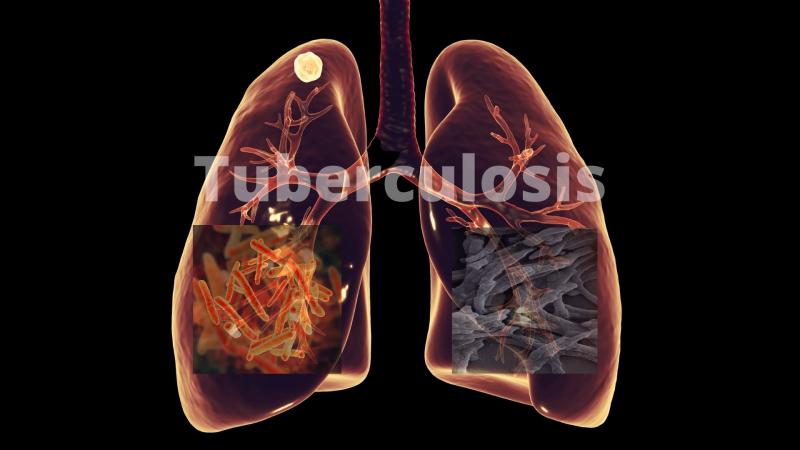
Researchers find familial dissimilarities in proteins from two species of Mycobacterium.
Tuberculosis, an infection that affected a whopping 10 million people as of 2018, is caused by a bacterium called Mycobacterium tuberculosis (Mtb). This bacterium infects by hijacking the functioning of immune cells and using artillery of proteins and lipids, known as effector molecules. So far, only a few effector molecules that exploit the host immune system, like those that interfere with macrophages, have been identified.
One such effector molecule under scrutiny is PepN, an enzyme capable of cutting down host proteins into smaller units, leading to an imbalance in the host protein levels. Mycobacterium smegmatis (Msm), the non-pathogenic, fast-growing cousin of Mtb, also produces a form of PepN that is structurally similar. A recent study, led by researchers at the Translational Health Science and Technology Institute, Faridabad, looked for the similarities between the enzymes produced by the two members of the Mycobacterium family. The findings, published in the journal PLoS ONE, aims to understand the roles of the peptide in the two bacteria. The study was partly funded by the University Grants Commission (UGC), Indian Council of Medical Research (ICMR) and the Department of Biotechnology (DBT).
The researchers found that PepN enzyme is similar in structure across all the members of the mycobacterial species. There was a 78% resemblance in the structures of PepN from Mtb and Msm. Both the enzymes also have a portion similar to that of a human protein called ERAP-1(endoplasmic reticulum aminopeptidase), which is involved in processing and transport of proteins. Based on this observation, the researchers hypothesised that the endoplasmic reticulum—a cell organelle that produces proteins—was the site of attachment for the PepN enzyme.
However, when the researchers injected PepN into macrophages and stained with specific immunofluorescent dyes, they observed fluorescence only in the cytoplasm and not the nucleus or the endoplasmic reticulum. As a result, they concluded that PepN of Mtb and Msm was not located in the endoplasmic reticulum or the nucleus. Instead, the protein placed itself in the cytoplasm of the macrophage cells, despite sharing similarities with the human ERAP-1 protein.
When the researchers changed the genetic structure of both bacteria to produce excess PepN in the bacterial cells, they found that the Mtb cells were able to tolerate the surplus PepN. However, the Msm cells could not withstand the increased secretion of PepN and got rid of the excess by breaking it down. Interestingly, when they introduced the PepN from Mtb in the growing environment of Msm, Msm broke that down as well. Chemical analysis using mass spectrometry showed that Mtb did not secrete any excessive amounts of PepN. On the other hand, along with breaking down the excess, Msm seemed to compensate by over secreting its native PepN to ensure its survival.
Msm is a fast-growing organism that doubles in population within 3–4 hours unlike Mtb, which requires 18–24 hours to double. Immunological studies of the Msm PepN revealed that the proteins found interacting with PepN of Msm were made of housekeeping proteins involved in DNA repair, respiratory functions, and maintaining the structural integrity of the cell. All of these proteins promote cell growth and ensure the survival of the bacteria. On the other hand, the proteins interacting with PepN of Mtb were involved in establishing its infective authority by modulating the levels of several host proteins in the macrophage cell, causing the disease and not the growth of the organism.
The scientists speculate that the Msm strain will degrade any foreign proteins and oversecrete its own to ensure survival. The PepN of Mtb may have the ability to cleave host proteins and initiate virulence in the human macrophage cells. Hence, it is not involved in the growth of the organism, which could attribute to the slow-growing nature of Mtb.
The study highlights the dichotomy of the purpose of PepN enzymes in the pathogenic and non-pathogenic Mycobacterial members, although they have a similar structure.
“To the best of our knowledge, there is no report thus far reporting on such divergent traits in any bacterial aminopeptidase,” say the researchers on their study.






